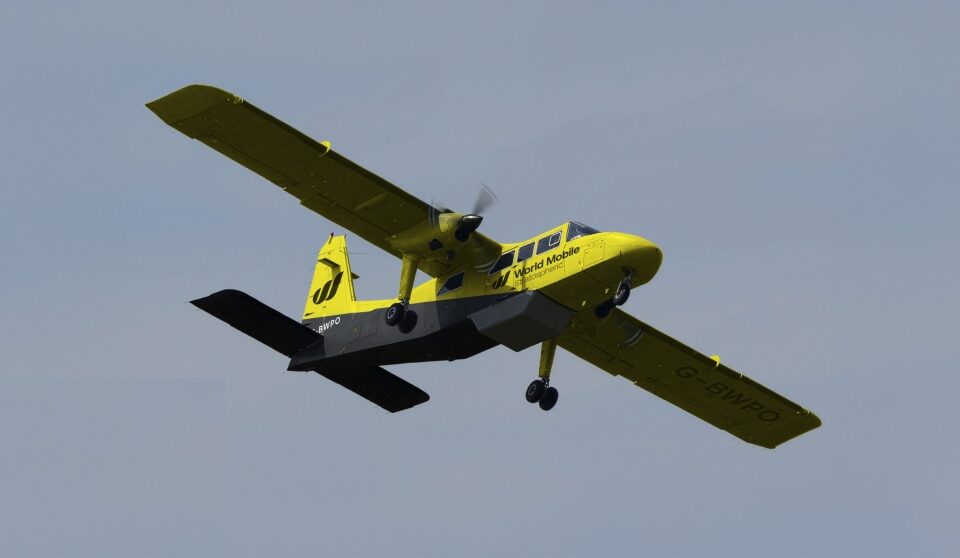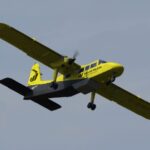World Mobile Stratospheric partners with Britten-Norman to launch airborne 5G tests using BN2T-4S Islander

High-altitude connectivity has long been perceived as a distant experiment, but World Mobile Stratospheric (WMS) is moving it closer to reality. The company has teamed up with Britten-Norman to run a live demonstration of an airborne 5G system using a BN2T-4S Islander aircraft — a project aimed at proving that mobile coverage can be sent down from the skies with far more reach and resilience than ground networks alone.
WMS is a joint venture between World Mobile Group and Indonesia’s digital infrastructure giant Protelindo. The team is building a stratospheric platform that they believe can deliver wide-area, affordable mobile service from high altitude. The upcoming demonstration with Britten-Norman is the first major checkpoint in that plan, showing how aircraft-based systems could extend coverage to remote regions and restore communication links after natural or man-made disasters.
To run the tests, WMS has acquired a Britten-Norman Islander that will carry an advanced phased-array antenna system. The aircraft will evaluate whether a high-altitude setup can support real-time 5G service across a 15-kilometre radius. This work builds on technology originally developed by Stratospheric Platforms Ltd, which is now fully integrated into WMS.
One of the strongest use cases for this system is emergency response. A WMS-equipped Islander could take off from short or rough runways and re-establish mobile networks in areas where infrastructure has been wiped out. For first responders and isolated communities, that kind of airborne coverage could make the difference between being cut off and being connected.
Flight testing is expected to start in mid-2026. The work will be carried out by WMS and Britten-Norman’s flight test organization, with system testing run at BT’s Adastral Park R&D center near Ipswich.
“This collaboration with Britten-Norman brings together world-class British aircraft engineering and World Mobile’s next-generation telecoms innovation. Our goal is to demonstrate how stratospheric communications can bring reliable 5G connectivity to places that need it most,” said Richard Deakin, CEO of WMS. “World Mobile Stratospheric will ultimately realise the use of DePIN networks using a sharing economy model from the stratosphere. This first major step provides a crucial milestone along that journey.”
Mark Shipp, Technical Director and Head of Design at Britten-Norman, added: “We’re proud to work alongside World Mobile Stratospheric to advance airborne connectivity technology. The Islander serves as a proven, certified platform for innovative applications, with our experienced teams ensuring seamless integration of novel technologies while maintaining the highest safety standards.”
The BN2T-4S Islander has long been known for its endurance, payload capacity, and ability to operate in demanding environments. Those traits make it a strong fit for this type of specialist mission, reinforcing its status as one of the most versatile utility aircraft ever built.
For WMS, the demonstration marks a major step toward its larger plan: stratospheric flight systems that can reach millions of people who currently lack reliable mobile coverage. The company is developing a hydrogen-powered aircraft capable of flying at up to 20,000 meters, using advanced phased-array radio technology to support as many as 500,000 simultaneous direct-to-handset connections.
Britten-Norman, based on the UK’s south coast, continues to serve global commercial, government, and military operators with its Islander fleet. With roughly 1,300 aircraft produced and a broad operator network in more than 120 countries, the company brings decades of experience in utility and special-mission aviation — experience that now intersects with WMS’s push to bring airborne 5G into the mainstream.
This test campaign won’t deliver stratospheric coverage overnight, but it sets the groundwork for a new chapter in how mobile networks reach people who have never had a strong signal — or any signal at all.




